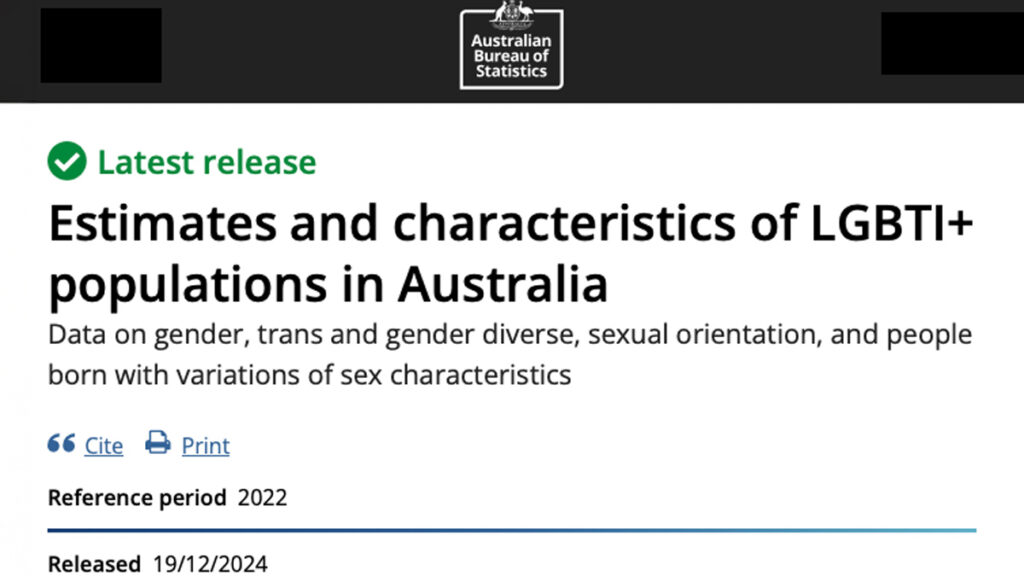Australian Bureau of Statistics: first data on LGBTI population size
The Australian Bureau of Statistics has released a first experimental estimate of the size of the LGBTI population, including people with innate variations of sex characteristics. I was pleased to peer review this analysis.
Page last reviewed 10 January 2025

On 19 December 2024, the Australian Bureau of Statistics (ABS) has released a first estimate on the size and characteristics of LGBTI+ populations in Australia. The key data findings on the population of people with innate variations of sex characteristics in Australia include that:
An estimated 63,300 people, or 0.3% of Australians 16 years and over, report they know they were born with variations of sex characteristics.
Of the estimated 910,600 Australians who are LGBTI+: One in fourteen (7.0%) report they know they were born with variations of sex characteristics. Most (91.3%) report they were not born with variations of sex characteristics.
These findings arise out of pooled data from national surveys using the following survey question:
Were you born with a variation of sex characteristics, sometimes called ‘intersex’ or ‘DSD’?
Including each of these terms helps to address misconceptions and clarify the scope of the population that the question intends to count. It names all of the key umbrella terms that respondents may have heard. In doing so, the survey question implements a 2020 National Standard (ABS 2021).
The references to people who “report they know” highlight the difficulties we have identified in counting people with innate variations of sex characteristics, including a legacy of secrecy and non-disclosure by clinicians to people with IVSCs. 0.7% of respondents gave the response “don’t know”, and this is higher than those responding “yes”. The ABS analysis sought to identify impacts from misconceptions that conflate IVSCs with LGBT identities and it established that false positives from endosex (non-intersex) transgender people were unlikely.
The data is drawn from 3 national surveys. The limited sample size means that it is unfortunately not yet possible to ascertain the characteristics and circumstances of this population in any detail. While these data cannot give us a count of the actual total number of people with IVSCs, these findings are a first step. As comprehension of our population improves, and with better reporting that respects the distinct nature of this variable, we can expect improvements to data quality over time. In the absence of inclusion of a question on innate variations of sex characteristics, limited data on the needs and characteristics can be expected to become available.
InterAction supports the collection of data on the number and circumstances of people with innate variations of sex characteristics. In my role with InterAction, I have worked with the Australian Bureau of Statistics for over a decade to develop norms and standards in order to do this respectfully, and in a context where intersex people continue to often be counted in inappropriate ways.
InterAction for Health and Human Rights has published analysis of population figures, and also provides guidance on respectful research.